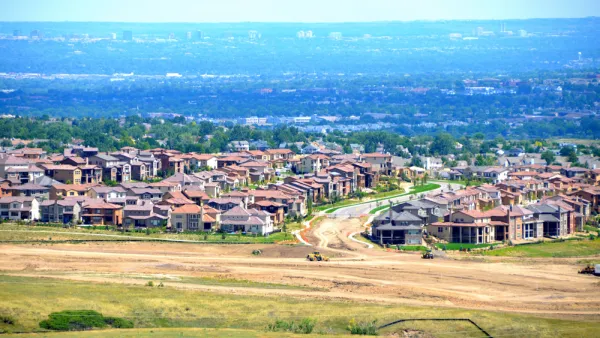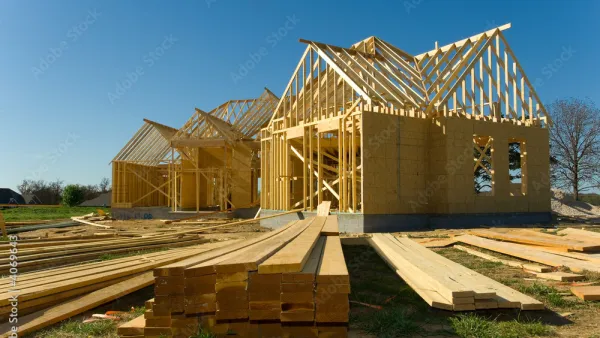The pandemic has resulted in an an increasing preference for sprawl among Americans, according to the findings of a recent Pew Research Center "American Trends Panel."

Vianney Gomez shares the findings of an "American Trends Panel" survey conducted this summer by the Pew Research Center.
"Americans today are more likely than they were in the fall of 2019 to express a preference for living in a community where 'houses are larger and farther apart, but schools, stores and restaurants are several miles away,'" writes Gomez to summarize those findings.
"There has been a corresponding drop in the share saying they would prefer to live somewhere with smaller houses that are 'closer to each other, but schools, stores and restaurants are within walking distance,'" according to Gomez.
The article provides additional insight into the demographic breakdown of the trend in U.S. housing preference. Previous trends in political preference only increased, according to the survey, but with both Republicans and Democrats increasing their preference for large homes and dispersed development:
As in the past, Republicans and Republican-leaning independents are more likely than Democrats and Democratic leaners to say they want to live in a community with larger houses even if there are greater distances to schools, shops and restaurants. Today, 73% of Republicans say this, up from 65% in September 2019. About half of Democrats (49%) now say they would prefer to live in a more widely spaced community, up from 42%.
Additional breakdowns for race, where respondents currently live, and by age are also included in the article.
The news about American housing preferences seems to be working at odds with the changes that will be necessary to prevent the worst outcomes of climate change, according to the Sixth Assessment Report published this summer by the International Panel on Climate Change. A 2019 IPCC report explicitly named U.S. land use and driving habits as a significant contributor to climate change.
The survey findings also seem counterintuitive in context of the obvious demand for city living in the United States, as evidenced by housing prices in cities and a housing affordability crisis that has only picked up pace since the pandemic began.
FULL STORY: More Americans now say they prefer a community with big houses, even if local amenities are farther away

National Parks Layoffs Will Cause Communities to Lose Billions
Thousands of essential park workers were laid off this week, just before the busy spring break season.

Retro-silient?: America’s First “Eco-burb,” The Woodlands Turns 50
A master-planned community north of Houston offers lessons on green infrastructure and resilient design, but falls short of its founder’s lofty affordability and walkability goals.

Delivering for America Plan Will Downgrade Mail Service in at Least 49.5 Percent of Zip Codes
Republican and Democrat lawmakers criticize the plan for its disproportionate negative impact on rural communities.

Test News Post 1
This is a summary

Test News Headline 46
Test for the image on the front page.

Balancing Bombs and Butterflies: How the National Guard Protects a Rare Species
The National Guard at Fort Indiantown Gap uses GIS technology and land management strategies to balance military training with conservation efforts, ensuring the survival of the rare eastern regal fritillary butterfly.
Urban Design for Planners 1: Software Tools
This six-course series explores essential urban design concepts using open source software and equips planners with the tools they need to participate fully in the urban design process.
Planning for Universal Design
Learn the tools for implementing Universal Design in planning regulations.
EMC Planning Group, Inc.
Planetizen
Planetizen
Mpact (formerly Rail~Volution)
Great Falls Development Authority, Inc.
HUDs Office of Policy Development and Research
NYU Wagner Graduate School of Public Service





























